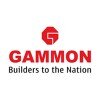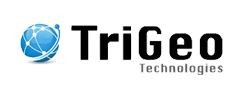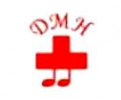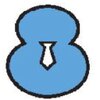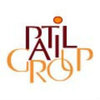5 M.R.Speciality Chemicals Jobs
Purchase Executive
M.R.Speciality Chemicals
posted 3+ weeks ago
Job Role Insights
Key skills for the job
Job Description
1. Procurement Planning and Strategy: - Collaborating with other departments to determine procurement needs and requirements. - Developing procurement strategies and plans based on organizational goals. - Conducting market research to identify potential suppliers, products, and pricing trends. - Evaluating supplier capabilities, reliability, and overall performance.
2. Supplier Selection and Relationship Management: - Identifying and selecting reliable suppliers based on quality, cost, delivery, and other criteria. - Negotiating terms and conditions, pricing, and contracts with suppliers. - Developing and maintaining strong relationships with suppliers to ensure a steady supply of goods and services. - Monitoring supplier performance, resolving any issues or disputes, and conducting supplier evaluations.
3. Purchase Order Processing: - Creating and processing purchase orders based on approved requisitions. - Ensuring accurate and complete documentation of purchase orders, contracts, and related records. - Coordinating with suppliers to confirm order details, delivery schedules, and payment terms. - Monitoring and tracking purchase orders to ensure timely delivery of goods and services.
4. Price and Cost Analysis: - Conducting price and cost analysis to ensure competitive pricing and cost-effectiveness. - Evaluating supplier quotations and proposals to determine the best value for the organization. - Identifying cost-saving opportunities and implementing cost reduction initiatives. - Monitoring and analyzing market trends and price fluctuations.
5. Inventory Management and Control: - Collaborating with inventory management teams to ensure optimal stock levels. - Coordinating with suppliers to manage lead times and minimize stockouts or excess inventory. - Monitoring and analyzing inventory levels, consumption patterns, and demand forecasts. - Implementing inventory control measures to optimize inventory turnover and minimize carrying costs.
6. Quality Control and Compliance: - Collaborating with quality assurance teams to ensure supplier compliance with quality standards. - Conducting supplier audits and assessments to ensure adherence to specifications and regulations. - Managing the resolution of quality issues, product returns, and supplier non-compliance.
7. Documentation and Reporting: - Maintaining accurate and up-to-date procurement records, including purchase orders, contracts, and supplier information. - Generating reports on procurement activities, supplier performance, and cost savings. - Providing regular updates to management regarding procurement status, challenges, and opportunities.
8. Continuous Improvement: - Identifying opportunities for process improvement and streamlining procurement operations. - Implementing best practices and efficient procurement procedures. - Staying updated with industry trends, emerging technologies, and market dynamics.
9. Ethical and Sustainable Procurement: - Promoting ethical and sustainable procurement practices, such as fair trade and environmentally friendly sourcing. - Ensuring compliance with corporate social responsibility policies and regulations.
Overall, a Purchase Executive plays a vital role in managing the procurement process, sourcing goods and services, negotiating with suppliers, and ensuring cost-effective and timely procurement for the organization. Their responsibilities include supplier selection, purchase order processing, price analysis, inventory management, quality control, documentation, and continuous improvement of procurement processes.
Employment Type: Full Time, Permanent
Read full job description What people at M.R.Speciality Chemicals are saying
What M.R.Speciality Chemicals employees are saying about work life
Similar Jobs for you
Purchase Executive
1-5 Yrs
Mumbai
Market Research, Relationship Management, Inventory Management +5 more
Internal Auditor
2-6 Yrs
Mumbai
Data Analysis, Operations, Procurement +7 more
Lab Operations Manager
2-6 Yrs
Mumbai
Customer Service, Procurement, Operations Management +5 more
Export Executive
1-5 Yrs
Mumbai
Operations, Packaging, Market Research +6 more
Accounts Executive
5-10 Yrs
Mumbai
Data Analysis, Taxation, Monitoring +7 more








